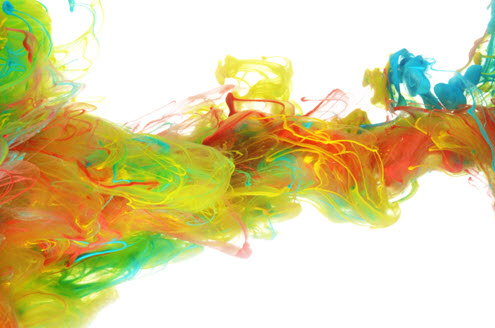The Psychology Behind the Tech Giants Office Design

Karen Haller
In our modern, mobile world people can be productive anywhere and anytime, but this is not to say that the office is disappearing. In fact more than ever the office needs to be a place where people actually want to spend their working hours.
Contemporary offices are now more than about just functionality. They have evolved to reflect the personality and the values of the business, creating a sense of belonging for its employees.
Facebook’s disregard of rules design
Facebook’s headquarters in Menlo Park, California, for example, are built to embrace fluidity and the free movement of ideas.
The furniture is constantly reshuffled around the office, the aim being to create a state of perpetual change. This organic approach to office design must be incredibly refreshing for Facebook’s staff, and mirrors the Zuckerberg disregard for rules and desire to stay ahead of the curve.
To see just what Facebook’s disregard of rules design looks like click here
Applied design psychologist view on office design
Sally Augustin, an applied design psychologist and a fellow of the American Psychological Association, whose work looks into optimising the workspace for human productivity and happiness:
“We need to remember that humans evolve extremely slowly and people working today have the same psychological needs that their grandparents had. When spaces are designed to support human’s psychological needs (for things such as control of their experience, privacy when desired, tools to do their jobs well), stress levels fall and human relationships flourish.”
“Positive relationships also are supported by creating natural drawing points that gather employees together spontaneously, such as coffee bars with good and free coffee. If these spaces are pleasant places to be, those in them are more likely to be in a good mood, which has positive repercussions for human relationships. Research shows that people naturally want to gather with their co-workers, and offices must support the professional activities likely to ensue when people co-locate.”
Shutterstock’s non corporate, open-plan design
The most productive open plan offices always offer a variety of places for people to get work done. Shutterstock’s office in the Empire State Building, for example, has kept the iconic art-deco theme of the original building, but has avoided the square, corporate tone through intelligent and varied open-plan design.
To see what Shutterstock’s non corporate, open-plan design looks like click here
The designers have provided numerous areas away from the central office where people can go to work, including an 8-bit game room, a yoga studio, a set of swings for informal meetings, as well as a secret steampunk themed library providing a quiet reading space. A wide central staircase, encouraging serendipitous meet-ups, leads to the heart of the office where there is a free café which doubles as a collaborative event space.
An office now needs to communicate a company’s values in order to create a sense of community and ensure workers actually want to turn up for work. One design no longer fits all when it comes to building an office. In fact, they’re increasingly being customized to reflect the needs of employees and the business culture they inhabit. Twitter’s headquarters in San Francisco is designed like a giant birdhouse, which reflects the company’s light, social brand identity and creates a strong sense of belonging for its employees.
Applied colour psychology view on office design
As an applied colour psychology specialist, I can see why businesses are moving towards colourful, fun, playful interiors. It’s understandable after working in grey, uninspiring designed environments for decades with minimal sensory stimuli; businesses want to create one bursting with colour, life, stimulation.
It’s a normal human reactionary response. The behaviours these designs and colours elicit would be a fun, playful environment, one that encourages new ideas and innovation. A perfect fit for these brands and their personality/identity.
What these brands need to be careful of is the workplace doesn’t become too playful. Whilst the staff are happy and motivated, it could have an adverse effect on productivity.
“be aware of what I call the pendulum effect, swinging completely from grey, bland to colour overwhelm”
They need to be aware of what I call the pendulum effect, swinging completely from grey, bland to colour overwhelm. Working in either of these extremes aren’t natural states to live in. Interesting they can cause similar adverse results. And what happens when there is too much colour saturation, sensory overload, it swings all the way back to grey again.
It’s always about creating the right balance of behaviours that are in alignment with your business personality and values.
Don’t jump on this bandwagon if it isn’t right for the personality of your business. This type of design is definitely not for every business. This would not be suitable for say law firms, accounts or financial institutions where focused concentration would be needed.
It’s important to think first about what behaviours you want to encourage in the space – is it mental, physical, about balance, emotional? Then you can start looking at the colour tones and combinations and the design to create these behaviours.
Will Prior, who is the manager of a W1 virtual office in London, sees workspaces of the future taking a new direction: “I think the entire definition of an office is changing. Designers and architects have realised that people do not work efficiently when locked inside a box – in fact this bland environment only fosters frustration and alienation.”
“Instead, offices should be designed around what makes people happy. They should be a place people actually want to get out of bed in the morning and travel to. A home away from home!”
If you would like to know how you can create the ideal working environment for your staff then email Karen on [email protected] for more information.




Really interesting Karen, thanks for the links to the innovative Tech headquarters. The last place I worked in was a brand new, £40 million purpose built school. I have to say the all glass design did nothing for me personally – I found classrooms with glass walls very distracting for students and teachers alike – a bit like teaching in a goldfish bowl!
The open-plan aspect was a great idea, but in practice didn’t work so well with the (high-school) age-group. The primary area seemed much more productive. And there wasn’t really much colour around – grey carpet, steel and glass, white walls, grey tables. A couple of sets of red chairs added a splash of colour in the open area between classrooms, but that was about it. The interest and colour came from wall displays which changed quite regularly of course.
Is this trend to open-plan and no colour one you see a lot of in schools and offices?